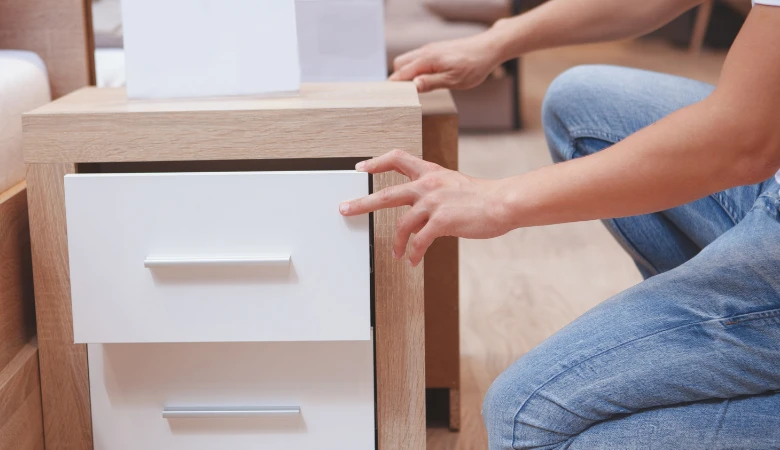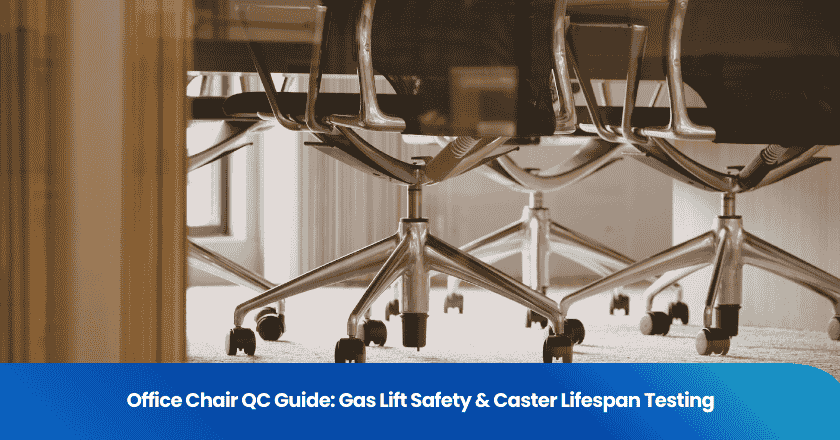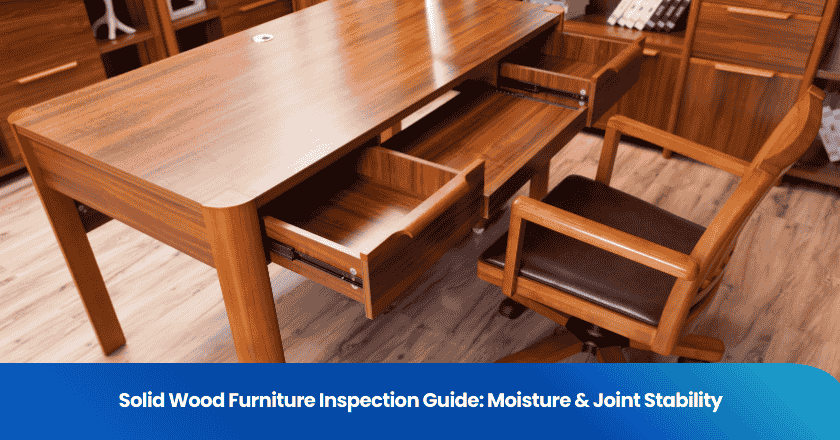
A clear understanding of the furniture quality inspection process shapes success in modern manufacturing. Each inspection stage maintains strict quality standards as furniture moves from the factory floor to the showroom. Inspectors check materials, construction, and finish to ensure every piece meets expectations. The factory relies on precise inspection to prevent defects and uphold quality. High-quality furniture results from careful attention at every stage, building trust with customers and supporting long-term satisfaction.
Key Takeaways
• Furniture quality inspection includes several key stages: material checks, in-process monitoring, final review, container loading, and showroom readiness.
• Using detailed checklists and tests at each stage helps catch defects early and ensures consistent, high-quality products.
• Common defects like surface flaws, weak joints, and incorrect dimensions can be prevented through strong quality control and employee training.
• Following industry standards and involving third-party inspections add trust and improve product reliability.
• Thorough inspections build customer confidence and support long-term success for furniture manufacturers.
Inspection Journey
Overview
The journey of furniture quality inspection begins long before a finished product reaches the customer. Each step in the process plays a vital role in maintaining high standards. Inspectors focus on every detail, from raw materials to the final presentation. They use clear procedures and checklists to guide their work. This approach ensures that every piece of furniture meets strict quality requirements. The inspection journey helps manufacturers identify issues early and correct them before products leave the factory. Consistent attention to quality builds trust with buyers and supports a strong reputation in the market.
Note: A thorough inspection process not only prevents defects but also improves efficiency and reduces waste.
Key Stages
Furniture inspection involves several key stages. Each stage targets specific aspects of quality and performance:
1. Material Inspection
Inspectors examine raw materials for defects or inconsistencies. They check wood, metal, fabric, and other components to ensure they meet quality standards.
2. In-Process Checks
During assembly, inspectors monitor construction techniques and workmanship. They verify that joints, fasteners, and finishes align with specifications.
3. Final Inspection
At this stage, inspectors review the completed furniture. They look for surface flaws, stability, and overall appearance. Any issues found must be corrected before approval.
4. Container Loading
Inspectors oversee the loading process to prevent damage during transport. They confirm that packaging protects the furniture and that items are loaded securely.
5. Showroom Readiness
The last stage ensures that furniture arrives in perfect condition. Inspectors check for any transit damage and confirm that each piece is ready for display.
Each stage in the furniture quality inspection process supports the goal of delivering reliable, attractive, and durable furniture to customers.
Furniture Quality Inspection Stages
Material Inspection
Material inspection forms the foundation of the furniture quality inspection process. Inspectors begin by evaluating all raw materials before production starts. They examine wood, metal, fabric, and hardware for consistency, strength, and appearance. This stage ensures that only materials meeting strict quality standards enter the production line.
Inspectors use standardized checklists to record findings and document any deviations. They measure moisture content in wood, check for warping or cracks, and verify the grade of metals. Fabrics undergo tests for colorfastness and durability. By identifying defects early, the factory prevents costly errors later in the process.
Note: Material inspection reduces the risk of defects in the final product and supports effective quality control from the start.
In-Process Checks
In-process checks take place during assembly and construction. Inspectors monitor each step to ensure workers follow specifications and best practices. They check joint alignment, fastener placement, and adhesive application. Inspectors also verify that dimensions match design drawings.
Quality control teams use detailed documentation to track progress and record any issues. They rely on standardized procedures to maintain consistency across production batches. In-process checks allow for immediate correction of problems, which helps maintain high quality throughout the manufacturing process.
A typical in-process checklist includes:
• Joint strength and alignment
• Fastener security
• Surface preparation
• Component fit
These checks support continuous improvement and help deliver reliable furniture to customers.
Final Inspection
Final inspection represents a critical stage in furniture quality inspection. Inspectors review the completed furniture for appearance, function, and safety. They look for scratches, dents, or finish flaws. Stability and structural integrity receive close attention.
Inspectors perform product inspection using comprehensive checklists. They test moving parts, such as drawers and hinges, to ensure smooth operation. Measurements confirm that the furniture meets design specifications. Any issues found during final product inspection require immediate resolution before approval.
Tip: Thorough quality checks at this stage protect the reputation of the manufacturer and ensure customer satisfaction.
Container Loading
Container loading inspection focuses on protecting furniture during transport. Inspectors supervise the packing process to prevent damage from shifting or impact. They check that each item receives proper wrapping and padding. Inspectors also verify that cartons are labeled correctly and stacked securely.
Standardized procedures guide the loading process. Documentation records the condition of each piece before shipment. This stage of quality inspection in manufacturing reduces the risk of transit damage and supports smooth delivery to retailers or customers.
A sample table for container loading checks:
| Item | Condition | Packaging | Labeling | Placement |
|---|---|---|---|---|
| Dining Table | Good | Wrapped | Yes | Secured |
| Upholstered Chair | Good | Boxed | Yes | Top Layer |
| Bookshelf | Good | Wrapped | Yes | Bottom |
Showroom Readiness
Showroom readiness inspection ensures that furniture arrives in perfect condition and is ready for display. Inspectors examine each piece after transport for any signs of damage or defects. They clean surfaces, tighten fittings, and make minor adjustments as needed.
This stage of product inspection confirms that the furniture meets showroom standards for appearance and function. Inspectors use checklists to verify that all components are present and assembled correctly. Documentation supports accountability and provides a record of the inspection process.
Showroom readiness inspection helps maintain high quality and supports a positive first impression for customers.
Each stage of furniture inspection plays a vital role in delivering quality products. By following standardized procedures and thorough documentation, manufacturers achieve consistent results and build trust with buyers.
Tests and Checklists
Common Tests
Furniture manufacturers rely on a range of tests to verify quality at every stage of production. These tests help inspectors identify potential issues before the furniture reaches customers. Inspectors often perform strength tests to check the durability of joints and frames. They use stability tests to ensure that tables, chairs, and cabinets do not wobble or tip easily. Surface finish tests help confirm that coatings resist scratches and stains.
Inspectors also conduct moisture content tests on wood to prevent warping or cracking. For upholstered furniture, they check fabric for colorfastness and resistance to wear. Product inspection teams may use load tests to simulate real-world use and confirm that furniture can handle daily stress. These tests form a critical part of quality control and support the goal of delivering reliable products.
Tip: Regular testing during production helps maintain consistent quality and reduces the risk of defects in the final product.
Inspection Checklists
Inspection checklists guide inspectors through each step of the quality control process. These checklists cover all aspects of furniture inspection, from material selection to final product inspection. A typical checklist includes sections for dimensions, surface quality, hardware installation, and assembly accuracy.
Inspectors use checklists to document findings and ensure no detail gets overlooked. They record results for each item, making it easier to track trends and identify recurring issues. Product inspection teams rely on standardized checklists to maintain consistency across different batches and models.
A sample checklist for furniture inspection might include:
• Visual appearance and finish
• Structural integrity
• Hardware and fastener security
• Functionality of moving parts
• Packaging and labeling
Checklists play a vital role in quality control by supporting thorough, repeatable inspections and helping manufacturers deliver high-quality furniture every time.
Defects and Prevention
Typical Defects
Furniture manufacturers often encounter several common defects during production. These defects can affect both appearance and function. Inspectors look for these issues at every stage of quality inspection. Some typical defects include:
• Surface imperfections: Scratches, dents, or uneven finishes can reduce the visual appeal of furniture.
• Structural weaknesses: Loose joints or weak frames may compromise stability and safety.
• Incorrect dimensions: Parts that do not match design specifications can lead to assembly problems.
• Hardware issues: Missing or poorly installed fasteners and hinges can affect usability.
• Color inconsistencies: Variations in stain or paint can create an uneven look.
Note: Early detection of these defects during inspection helps maintain high quality and prevents costly rework.
Prevention Methods
Manufacturers use several methods to prevent defects and ensure consistent quality in furniture. Effective prevention starts with strong quality control systems and clear procedures. Some proven methods include:
1. Standardized checklists: Inspectors follow detailed checklists during each inspection stage. This approach ensures that no aspect of quality gets overlooked.
2. Employee training: Well-trained workers understand the importance of quality and follow best practices during assembly.
3. Regular equipment maintenance: Properly maintained tools and machines help produce accurate and consistent results.
4. Material verification: Inspectors check all incoming materials for defects before production begins.
5. Documentation: Accurate records of each inspection support traceability and continuous improvement.
| Prevention Method | Impact on Quality |
|---|---|
| Standardized Checklists | Consistent inspections |
| Employee Training | Fewer assembly errors |
| Equipment Maintenance | Accurate production |
| Material Verification | Fewer material defects |
| Documentation | Improved traceability |
By applying these methods, manufacturers reduce the risk of defects and deliver high-quality furniture to customers. Consistent inspection and prevention strategies support long-term success in the industry.
Standards and Third-Party Checks
Industry Standards
Industry standards set the foundation for quality in furniture manufacturing. Organizations develop these standards to define clear requirements for materials, construction, and safety. Manufacturers follow these guidelines to ensure each piece of furniture meets expectations for durability and performance. Inspectors use these standards as a reference during every inspection stage. They check that products align with accepted benchmarks for strength, finish, and stability.
A typical set of industry standards covers:
• Material specifications
• Load and stability requirements
• Surface finish quality
• Safety features
These standards help manufacturers maintain consistency and reduce the risk of defects. They also support quality assurance services by providing measurable criteria for evaluation. When companies follow industry standards, they build trust with customers and demonstrate a commitment to quality.
Note: Adhering to industry standards improves product reliability and supports long-term customer satisfaction.
Third-Party Inspections
Third-party inspections play a vital role in quality assurance services. Independent inspectors evaluate furniture at different stages of production. They use objective methods to verify that products meet industry standards and client requirements. These inspections add an extra layer of quality control and help identify issues that internal teams might miss.
Third-party inspection teams often provide detailed reports. These documents outline findings, highlight any non-conformities, and recommend corrective actions. Manufacturers use this feedback to improve processes and prevent future problems. Third-party inspections also support compliance with international regulations, which is essential for companies that export furniture.
| Inspection Type | Purpose | Benefit |
|---|---|---|
| Pre-production | Verify materials and plans | Prevent early defects |
| In-process | Monitor assembly and quality | Catch issues quickly |
| Final | Confirm finished product status | Ensure readiness |
Quality assurance services that include third-party inspections strengthen the overall quality system. They help manufacturers deliver safe, reliable, and attractive furniture to the market.
A thorough quality inspection process shapes the success of every furniture manufacturer. Each stage, from material checks to showroom readiness, strengthens product reliability and ensures high quality standards. Quality control teams identify issues early and maintain consistency. Customers trust furniture that passes strict quality checks. Companies that invest in quality inspection build strong reputations and achieve lasting customer satisfaction.
Prioritizing quality inspection leads to better products and greater confidence in every purchase.
FAQ
What is the main goal of furniture quality inspection?
The main goal is to ensure each piece meets safety, durability, and appearance standards. Inspectors check every stage of production to prevent defects and deliver reliable products to customers.
How often do inspectors perform quality checks during manufacturing?
Inspectors conduct checks at multiple stages, including material selection, assembly, final inspection, and container loading. Frequent inspections help catch issues early and maintain consistent quality.
Why do manufacturers use standardized checklists?
Standardized checklists guide inspectors through each step. These lists help ensure no detail gets missed and support consistent, thorough inspections across all production batches.
What happens if inspectors find defects during inspection?
Inspectors document defects and report them to the production team. The team corrects issues before the furniture moves to the next stage or leaves the factory.
Do third-party inspections offer extra benefits?
Third-party inspections provide an unbiased review of product quality. These independent checks help manufacturers meet industry standards and build trust with customers.

Smart Sourcing & Quality Assurance Content Team
Article by Smart Sourcing & Quality Assurance Content Team
The Smart Sourcing & Quality Assurance Content Team is dedicated to delivering high-quality, easy-to-understand information that empowers our audience to navigate the complexities of global sourcing and quality assurance. Our team of writers has extensive experience in creating content across various fields, including procurement, supply chain management, quality assurance, market trends, and industry best practices. We specialize in sectors such as apparel, textiles, and consumer goods, providing targeted insights to help businesses in these industries optimize their sourcing strategies, ensure product quality, and maintain a competitive edge in the market.
Grow your business with TradeAider Service
Click the button below to directly enter the TradeAider Service System. The simple steps from booking and payment to receiving reports are easy to operate.



